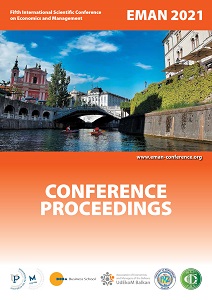ANALYSIS OF INTEGRATION POLICIES FOR VICTIMS OF TRAFFICKING, THE NECESSITY OF THEIR MULTIDISCIPLINARY EVALUATION
ANALYSIS OF INTEGRATION POLICIES FOR VICTIMS OF TRAFFICKING, THE NECESSITY OF THEIR MULTIDISCIPLINARY EVALUATION
Author(s): Suela Hana
Subject(s): Social Sciences, Economy
Published by: Udruženje ekonomista i menadžera Balkana
Summary/Abstract: Extensive developments and changes in the economic, political, social, cultural and scientific fields have undoubtedly brought problems and disturbing phenomena in many parts of the world, such as the trafficking and exploitation of human beings. Every year many women, girls and children are illegally transported across the borders of their countries of origin, sold or bought, bringing to mind all the primitive ways of human slavery, seen in stark contrast to the galloping development that society has taken today, as well as aspirations for a worldwide civilization and citizenship. Regarding Albania, the beginning of trafficking in human beings dates in 1995 (Annual Analysis of 2003 of the State Social Service, Tirana), where the country found itself in a situation of instability of political, economic, social and cultural changes, as well as in a transitional geographical position to was used by traffickers, mostly Albanians, as an “open door” for the recruitment, transportation and sale of women, girls and children from Moldova, Russia, Romania, Turkey, Albania, China, etc. Albania is identified as a source and transit country for trafficked women and children. In addition, many NGOs and international organizations report significant increase cases in the trafficking of human beings. In 1999, official sources reported that young women and girls had been lured or abducted from refugee camps in Albania during the Kosovo crisis and then sold for prostitution in Italy and the United Kingdom. Reports from Italy, Germany, Belgium and the UK suggest that Albanian women and girls, which are trafficked for prostitution mostly are from rural areas (Organization for Security and Co-operation in Europe Review Conference, September 1999). It is almost common to talk about the phenomenon of trafficking in human beings, about the motivating and attractive factors, the consequences associated with this phenomenon of Albanian society. Given the extent of the trafficking phenomenon during the last 30 years transition period in Albania, the Government has made different legislative and institutional efforts, through a strategic approach to combat and mitigate this phenomenon. However, the elements of identification, protection, reintegration and long-term rehabilitation for victims of trafficking remain issues of concern and still not properly addressed, in the context of the institutional fight against trafficking in persons, which should have as its primary goal the protection of the human rights for victims of trafficking and not their further violation or re-victimization (Annual Report of the European Commission, 2007).
Book: EMAN 2021 / 5 – Economics & Management: How to Cope with Disrupted Times - CONFERENCE PROCEEDINGS
- Page Range: 413-419
- Page Count: 7
- Publication Year: 2021
- Language: English
- Content File-PDF

